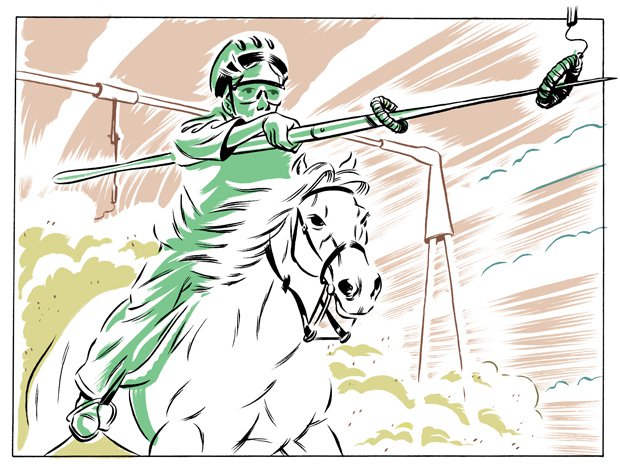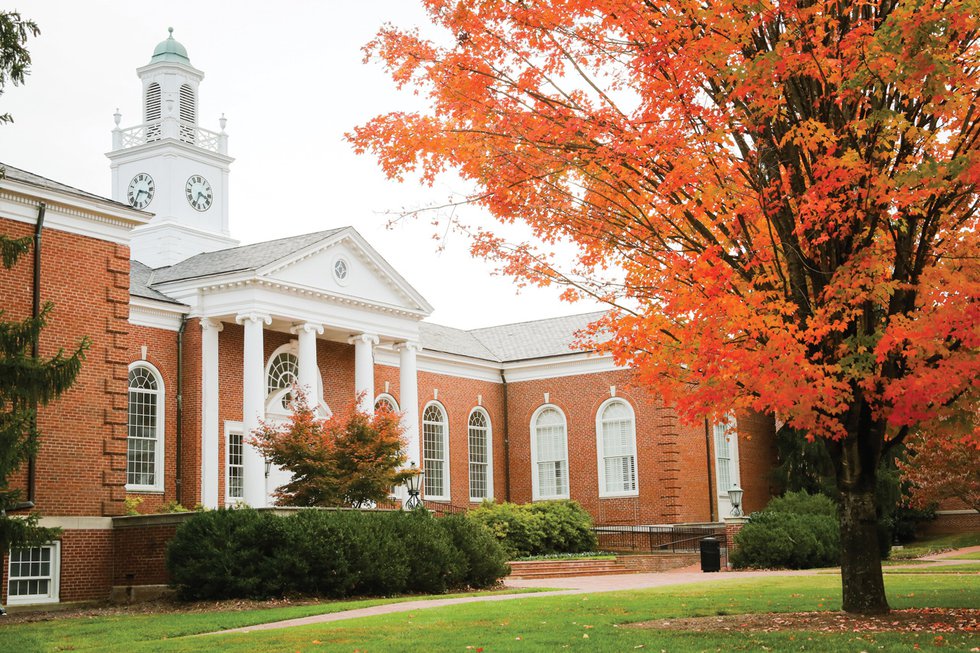Modern jousting is anything but medieval, says Mona Banton of the National Jousting Association.


Jousting by the Numbers
The track: 80 yards long by 10 feet wide. Three portable arches hold the rings at 6 feet nine inches from the ground. Most jousters have their lances custom made to 6 feet 9 inches, weighing anywhere from 1-15 pounds depending on preference.
The word “jousting” evokes images of thundering horses, roaring crowds and armor-clad knights charging at one another with huge metal lances—don’t mind the gore. Alas, that’s not the case today. Modern jousting is a sedate sport in which individual riders trot or canter down a dirt track and attempt to spear three metal rings with a wooden lance. It’s derived from the training exercises that knights in the Middle Ages used to hone their fighting skills. We asked Mona Banton, president of the National Jousting Association, based in Mt. Solon, Virginia, to unravel the modern mysteries of a medieval sport.
We thought jousting meant spearing people, not rings. No life-or-death action?
Violence was phased out of jousting a long time ago. The death of several nobles and at least one king—King Henry II of France in 1559—plus severe disapproval of the sport by the Church, and the invention of gunpowder all brought an end to man-to-man jousting by the 1600s. By the time the first tournaments were held in the U.S. in the late 1700s, they were focused exclusively on feats of skill with rings or wooden targets called quintains.
Is there a book of rules?
The National Jousting Association does have rules for its tournaments, and so do most of the state associations. The rules set guidelines for different levels of competition. For example, novice jousters spear 1 3/4-inch-diameter rings while professional-level competitors try for rings that are anywhere from one inch to only a quarter-inch in diameter. There are also strict rules of behavior—no yelling at the judges, and mistreating your horse is an absolute no-no.
What is a tournament like—how many competitors?
Tournaments can have anywhere from 20 riders to 80 or more. Many of our tournaments are actually backyard events, held at our members’ homes.
I assume the horses are not fiery steeds.
The horses have to be exactly the opposite—calm, steady and absolutely trustworthy. You’re sitting perched on their backs like a jockey, so they can’t swerve or spook. Once you’re lined up with the arches, you drop the reins and they have to keep going without much guidance from you. We have all breeds, from Tennessee Walkers to quarter horses, Arabians and others.
So courage is no longer a necessity?
Most important is great hand-eye coordination. We have an orthopedic surgeon who doesn’t ride all the time, but when he does, he wins. It takes about three years of training to really start winning competitions, and if you don’t practice regularly … you’re not going to win.
What is the weapon you use?
It’s a wooden or fiberglass lance with a machined metal tip made of brass or steel. A few riders have made lances of all stainless steel. I have a 4-foot wooden lance made from an old hoe handle, and it only weighs about two pounds.
Are there any old traditions left?
Just our names. Every jouster has to choose a name to ride under. Men are “Knight of …,” and women are “Maid of ….” For example, I’m the Maid of Midway, because my home is midway between Scottsville and Dillwyn.









